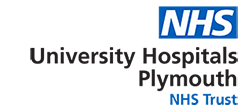How to check your Lymph Nodes
 Introduction
Introduction
You have been diagnosed with a skin cancer that on occasions can spread into the lymphatic system. That is why, as part of your examination, your nodes are examined by your doctor or specialist nurse at your follow-up appointments. The lymph nodes examined depend on the location of your skin cancer, eg: if your skin cancer was on your leg then the lymph nodes in your inguinal area (groin) will be felt or if on your face then the nodes in your head and neck would be examined. The aim is to detect any enlargement of the lymph nodes and undertake investigations at an early stage. Some people express a wish to check their own lymph nodes between clinic appointments. This is why you have been given this information. Your doctor or nurse will show you how and which lymph nodes to check.
The Lymphatic System
This system consists of lymphatic vessels and tissue. Lymph is a fluid that contains proteins and waste materials, which is collected from around the cells in the body, eventually draining into larger vessels.
Lymphatic vessels
One way of describing this is to imagine a river that starts as a small stream, which then weaves its way between the cells and small blood vessels of the body’s connective tissue. On its journey more tissue and waste material is collected. The fluid (lymph) that accumulates firstly drains into larger lymph vessels, then into ducts in the neck, before emptying into the blood stream.
Lymphatic tissue
Lymph nodes are small oval clumps of lymphatic tissue found at intervals along the vessels. They are grouped like “beads on a string” both deep in the body and near the surface (see previous diagram). These lymph nodes filter out harmful organisms and cells from the lymphatic fluid before it is returned to the blood stream. Lymph nodes can only be felt in the areas listed:
- head and neck
- arms
- axilla (armpits)
- inguinal area (groin)
- back of knees
Usually lymph nodes are not enlarged and thus not able to be felt, but if you have previously had an infection (such as tonsillitis) you may have noticed and felt lymph nodes becoming enlarged, painful and tender. Lymph nodes can also become enlarged due to cancer cells lodging in them. Checking your lymph nodes once a month is sufficient and this can be done at the same time as you check your skin for any changing moles. Checking them more often may result indifficulty noticing any change.
Do not panic if you feel a lymph node as it may well be due to an infection, but if it has not gone away in a week contact your doctor or specialist nurse.
 How to Check Lymph Nodes in the Head and Neck
How to Check Lymph Nodes in the Head and Neck
- With your fingertips, in a gentle circular motion feel the lymph nodes shown.
- Start with the nodes in front of the ear (1) then follow in order finishing just above the collar bone (10)
- Always check your nodes in this order.
- Check both sides for comparison. If you have an enlarged lymph node it may feel like a swelling the size of a pea, sometimes they can be larger.
When feeling the nodes in your neck (marked 8):
- Tilt your head towards the side you are examining, this helps to relax the muscle.
- Now press your fingers under the muscle.
When checking the lymph nodes above the collar bone:
- Hunch your shoulders and bring your elbows forward to relax the skin.
- Now feel above the collar bone (marked 10).
 How to Check Lymph Nodes in the Armpit
How to Check Lymph Nodes in the Armpit
Diagram how to check the lymph nodes in your armpitRemove all clothing down to the waist to get easy access to the armpits.
- Sit in a comfortable position.
- Check each armpit in turn.
To check the left side, lift your arm slightly then place the fingers of your right hand high into the armpit and then lower your arm.
- Feel in the central area of the armpit.
Now move your fingers firmly against the chest wall as follows:
- Along the front border of the armpit.
- Along the back border of the armpit.
- Feel along the inner border of the arm.
- Now check the other armpit.
 How to Check Lymph Nodes in the Groin
How to Check Lymph Nodes in the Groin
Diagram of the lymph nodes in the groinThere are two areas to look for inguinal (groin) nodes:
- Feel the horizontal chain of nodes in the right groin just below the ligament (see above diagram).
- Feel the vertical chain along the upper thigh (see above diagram).
- Check the lymph nodes in the other groin.
Conclusion
The purpose of this information is to help you understand why you have your nodes checked at your follow-up appointments. It explains which lymph nodes you need to check and how to undertake this procedure yourself. The aim is to ensure that if in the unlikely case there is spread of your skin cancer to the lymph nodes, it is detected and reported to your doctor or nurse straight away rather than waiting until your next clinic appointment.


